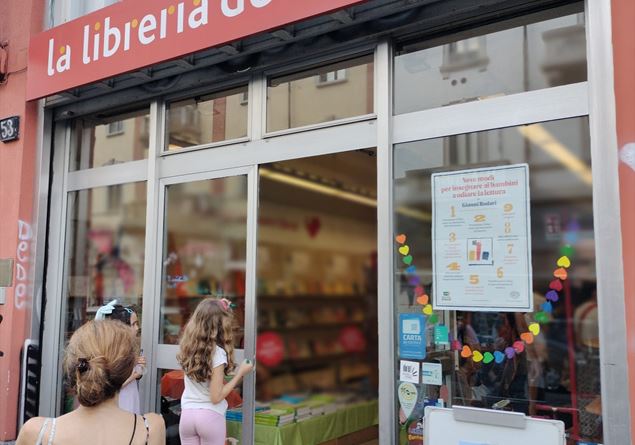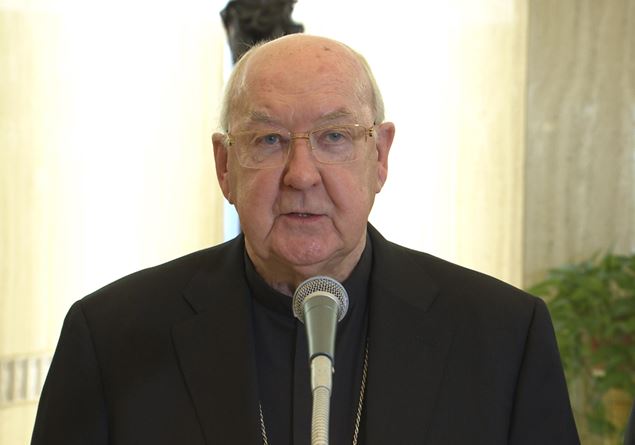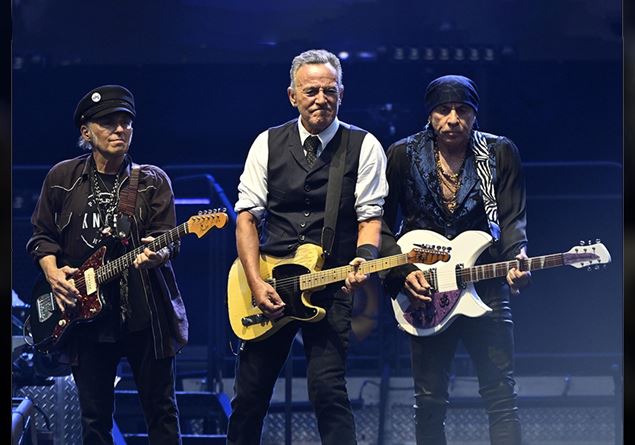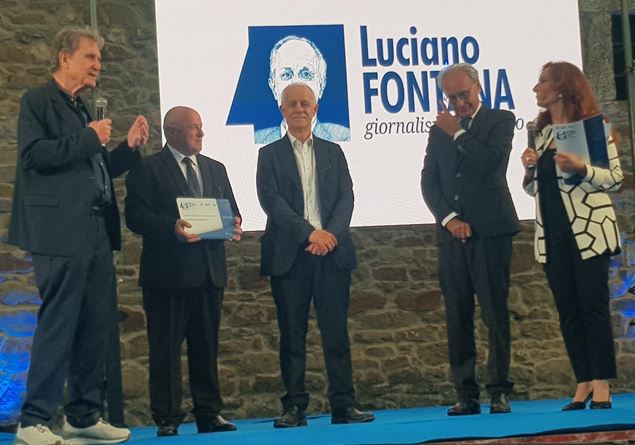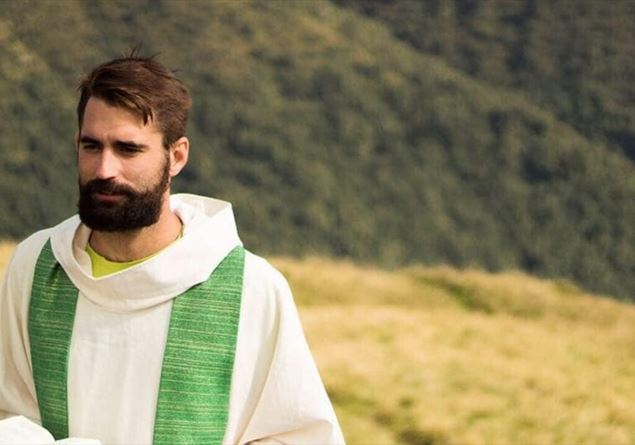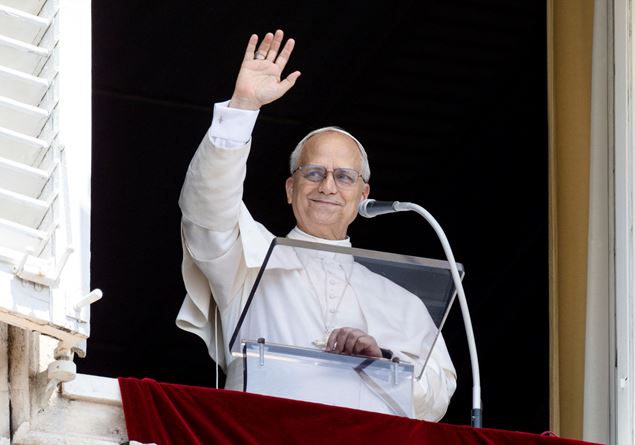To the death or renunciation of the pontiff (as happened in 2013 with Benedict XVI), All the positions of the Holy See cease immediately and everything, in fact, “blocks”, Except for what in bureaucratic jargon, it is called “ordinary administration” as recalls article 335 of the Code of Canon Law: «While the Roman office is vacant or totally prevented, nothing changes in the government of the universal Church; Instead, the special laws issued for these circumstances are observed “.
With the death of Pope Francis, which took place at 7.35 on April 21, the Angel Monday, Cardinal Camerlengo came into office, which since February 2019 is the Irish Kevin Joseph Farrell, (77 years old, in the photo above), current Prefect of the Dicastery for the laity, family and life.
It was Farrell who gave the official announcement of the death of the Argentine pontiff in a video recorded by Chapel of Casa Santa Marta Where, at 8 pm on Monday, the death of the Pope’s death will take place.
It is article 17 of the Apostolic Constitution Dominici Gregis universes To describe in detail what the Camerlengo tasks are when the headquarters are vacant with a whole series of not only formal procedures and obligations. “As soon as he received the news of the death of the Supreme Pontiff,” reads, “The Camerlengo of Santa Romana Chiesa must officially ascertain the death of the pontiff in the presence of the master of pontifical liturgical celebrations, the cleric prelates and the secretary and chancellor of the same apostolic chamber, who will compile the document or authentic deed of death. The chamberlain must also affix the seals to the study and the room of the same pontiff, providing that the staff usually residing in the private apartment can remain there until after the burial of the Pope, when the entire papal apartment is sealed; communicate his death to the Cardinal Vicar for Urbe, who will give news to the Roman people with special notification; and likewise to the Archpriest Cardinal of the Vatican Basilica; Take possession of the Vatican Apostolic Palace and, personally or by means of one of its delegates, the Palaces of Laterano and Castel Gandolfo, and exercise its custody and government; Establishing, having heard the cardinal leaders of the three orders, everything that concerns the burial of the pontiff, unless these, alive, has not expressed his will in this regard; Take care, on behalf and with the consent of the College of Cardinals, all that the circumstances will recommend for the defense of the rights of the Apostolic See and for a straight administration of this. In fact, it is the task of the Camerlengo of Santa Romana Chiesa, during the period of vacancies, to take care and administer the assets and temporal rights of the Holy See, with the help of the three assistants cardinals, Having said, once for less important issues, and every time for the most serious ones, the vote of the College of Cardinals ».
The methods of managing the vacant venue is the result of the combined provisions of several rules: the Code of Canon Law; the apostolic constitution Praedicate evangeliumpromulgated on March 19, 2022, with which Francesco redesigned the Vatican organization chart; the apostolic constitution Dominici Gregis universesa special law issued by John Paul II in 1996 “about the holiday of the Apostolic See and the election of the Roman Pontiff”; and finally the Apostolic Constitution In Ecclesiarum Communione issued on January 6, 2023 always by Francesco to reorder the vicariate of Rome.
Who is Cardinal Camerlengo Kevin Joseph Farrell
With the beginning of the vacant office, they decay automatically from all positions “All the leaders of the curial institutions and members” (including, therefore, the Secretary of State, Cardinal Pietro Parolin), Except, explains the Praedicate evangelium, The Master of the Pontifical Liturgical Celebrations, the Lombard Diego Ravelli, which will supervise the rites, including the pope’s funeral, during this period; And then the managers of the two offices that never go on vacation, the Major penitenticesthe cardinal Angelo de Donatis (who had chaired the ritual of the ashes on 5 March last), and The alms of his holinessthe Polish cardinal Konrad Krajewskiwhich, as the Dominici Gregis universes In article 14, “they continue to carry out ordinary affairs, subjecting what should have been reported to the supreme pontiff to the College of Cardinals”.
Then remain in office Vicar for the diocese of Romethe cardinal Baldassarre Reina (which last Friday Holy Friday had chaired the rite of the Via Crucis to the Colosseum), and the deputygente, the Monsignor Renato Tarantelli (As the Constitution foresees In Ecclesiarum Communionein articles 13 and 15).
Outtevere remain in office to take care of “only the business of ordinary administration”, reduced for obvious reasons to a minimum, the secretaries of the dicasteries, and, in the Secretariat of State, the substitute for general affairs, the Venezuelan Edgar Pena Parraand the secretary for relations with the States (the “Foreign Minister” of the Vatican), the British Paul Richard Gallagher, as well as the archpriest cardinal of the Vatican basilica and vicar general for the Vatican city, the Emilian Mauro Gambetti.
At this stage, two figures take on an effective role: the chamberlain of Santa Romana Chiesa and the dean of the Cardinal College, the Cardinal Giovanni Battista Rewhich on delegation of the Pope had chaired the solemn Easter vigil last Saturday in the Basilica of San Pietro.
Cardinal Farrell is American of Irish origins, a man of trusted by Francesco, who in 2016 called him to Rome by Dallas, where he was bishop, to lead the Dicastery for lay people, life, family.
Farrell was born on September 2, 1947 in Dublin, Ireland. After completing the primary and secondary schools he attended the Pontifical University of Salamanca in Spain and the Pontifical Gregorian University and the Pontifical University of San Tommaso d’Aquino, obtaining his license in philosophy and theology. Entering the Congregation of the Legionaries of Christ in 1966, he was ordained a priest on December 24, 1978 by Cardinal Eduardo Francisco Pirionio. After initially exercising the Ministry as chaplain of the Regnum Christi Movement at the University of Monterrey, Mexico, in 1983 he carried out the pastoral service in the parish of San Bartolomeo in Bethesda (Washington), in the United States of America.
The following year he set out in the archdiocese of the US capital, where he was deputy parish priest of San Tommaso Apostolo until 1985, then director of the Spanish Catholic Center in 1986, executive director of regent of Catholic charitable organizations from 1987 to 1988, secretary for financial affairs from 1989 to 2001 and parish priest of the Annunciation from 2000 to 2002. In the meantime he began to carry out the offices from 2001 of vicar general for the administration and moderator of the Curia.
On December 28 of the same year he was appointed by John Paul II Bishop the owner of Rusuccuru and auxiliary of Washingtonreceiving episcopal ordination on 11 February 2002 from Cardinal Archbishop Theodore Edgar McCarrick, Dimessed by the clerical state by Bergoglio when he was ascertained that he was a serial sexual abusator, who died last April at the age of 94 in Missouri where he had retired.
Returning to Farrell, on March 6, 2007 Benedict XVI called him to lead the diocese of Dallas. During the Episcopal Ministry he had the responsibility of various positions: Chancellor of the University of Dallas; Member of the Board of Directors of the Catholic University of America, the Papal Foundation, the Basilica of the Immaculate Conception, the San Luca Institute in Washington; President of the new evangelization of America; National delegate to international Eucharistic Congresses; Member of the Board of Directors of the Friends of the Pontifical Irish College in Rome; Episcopal moderator of the Consulta for diocesan financial management.
Within the US Episcopal Conference he carried out the Treasurer tasks, president of the Budget Committee and Finance and that for the National Collectors, member of the Divine Cult Committee, Consultant of the Immigration Committee, member of the Operational Group for the promotion of vocations to the priesthood and consecrated life.
The Camerlengo is assisted by the vice-challengo, Brazilian archbishop Ilson de Jesus Montanari, who is also secretary of the Cardinal College and, as such, the only non -cardinal to be able to enter conclave, and “by three cardinal assistants, of which one is the cardinal coordinator of the Council for the economy”, the German cardinal Reinhard Marx (as the Praedicate evangelium In Article 235): the other two are extracted, and turn from the Cardinal College. This is the “particular congregation” which, during the elections, can treat “only issues of minor importance, which are presented day by day or moment by moment” (Dominigi Gregis universesarticle 7).
The dean of the College of Cardinals is Giovanni Battista Re, 91 years old, Brescia della Val Camonica, a man who during the pontificate of John Paul II (who had created him in 2001) held the key positions of Substitute for General Affairs of the Secretariat of State and Prefect of the Congregation of Bishops.
The dean, assisted by the secretary of the college and replaced, possibly, by the underdeacon, the Italian-Argentine Leonardo Sandri, It has the task of giving the news of the end of the pontificate to all cardinals, as well as to the diplomatic body accredited at the Holy See, and convenes the general congregations of the cardinals, that is, the “congress” that prepares the conclave (as the Dominici Grecis university in Article 19 establishes).
He is responsible for the crucial task of establishing the agenda, with the themes on the agenda, and he indicates the “speakers” who will intervene and it is always him, If he is under 80 years old, who leads the indoors of the Sistine Chapel, when the Cardinal Vlectors vote.
At the expiry of their first five years, in February 2025, Francesco confirmed both Cardinal King and Cardinal Sandri in their roleand since both the dean and the sub-decanted are more than 80 years old, to lead the conclave is the oldest of the cardinals of the order of bishops, that is the cardinal Pietro Parolin, current Secretary of State.
A crucial and important role because he is the one who guides the works of the Conclave as all the Cardinal Vlectors are closed in the Sistine Chapel. Cardinal Decano is the one who also presides over the Mass “Pro Eligando Romano Pontifice” before the start of the conclave.



